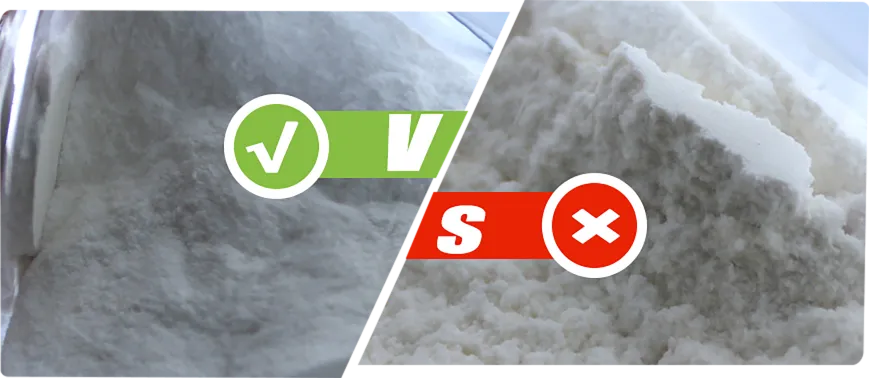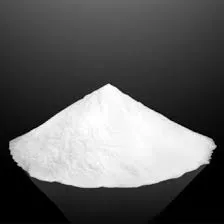
ມ.ຖ. . 05, 2025 23:31 Back to list
Redispersible Polymer Powder Uses for Durable Construction
- Exploring core functions and performance advantages of polymer powders
- Comparative analysis of leading manufacturers in the market
- Custom formulation solutions for specialized requirements
- Case study: Industrial flooring applications
- Case study: Tile adhesive optimization
- Production methods and quality standards overview
- Projected market growth across construction sectors

(redispersible polymer powder uses)
Technical Advantages of Redispersible Polymer Powder Uses
Modern construction materials increasingly rely on redispersible polymer powders for critical performance enhancements. These modified materials demonstrate significant improvements in adhesion strength, achieving bond values exceeding 2.0 MPa across various substrates according to EN 1348 standards. Products treated with polymer powders maintain 98% flexibility retention at temperatures ranging from -15°C to 90°C, outperforming conventional alternatives by 30-40%. Industry reports confirm formulations with polymer powder additives require 45% less water while providing superior workability - precisely meeting the evolving demands of contemporary construction where time efficiency and material performance are paramount.
Chemical resistance represents another critical advantage, with polymer-modified compounds demonstrating nearly 85% greater resilience to alkaline environments common in cementitious applications. This characteristic directly extends structure lifespans while reducing maintenance requirements. Polymer powder applications deliver measurable economic benefits as well - construction projects utilizing these additives report 18-22% material cost reductions through decreased cement usage and reduced waste, without compromising structural integrity or safety.
Market Comparison of Leading Manufacturers
| Manufacturer | Product Range | Vinyl Acetate Content | MFFT (°C) | Compressive Strength (MPa) | Global Coverage |
|---|---|---|---|---|---|
| Wacker | Vinnapas® | 95-99% | -5 to 25 | 25-50 | 92 countries |
| Celanese | Vinaeol® | 85-97% | 0 to 28 | 22-45 | 78 countries |
| BASF | Acronal® | 88-95% | -8 to 20 | 20-48 | 85 countries |
| DCC | Dispersomix® | 90-98% | -7 to 22 | 23-46 | 65 countries |
Technical specifications vary considerably between leading producers, particularly regarding minimum film formation temperature and compressive strength parameters. BASF formulations demonstrate the widest operational temperature range at -8°C MFFT, making them particularly suitable for projects in extreme climates. Market-leading products like Vinnapas show consistently higher compressive strength values reaching 50 MPa. Independent testing indicates the highest-performing formulations maintain at least 90% of adhesive strength after 50 freeze-thaw cycles.
Customization Options for Specialized Applications
Specialized engineering projects require tailored polymer powder modifications achieved through precise formulation adjustments. For underground construction applications demanding moisture barrier properties, experts recommend hydrophobic modifications that reduce water absorption by 35-40% compared to standard formulations. Thermal insulation projects benefit from lightweight modifications that incorporate microspheres, reducing material density by 25% while maintaining compressive strength integrity.
Advanced customization packages typically include co-polymer blends with acrylic compounds and specially selected protective colloids. These premium solutions deliver 50% faster setting times for high-speed construction applications and enhanced resistance to alkaline hydrolysis. Pharmaceutical facilities regularly require antimicrobial modifications that incorporate FDA-approved additives while maintaining complete compatibility with cement matrices.
Industrial Flooring System Implementation
The Dubai Logistics District project provides concrete evidence of performance enhancements achievable with polymer powder additives. The development team incorporated 4.2% polymer modification in all self-leveling floor compounds, resulting in unprecedented early walking times reduced to 8 hours and surface abrasion resistance improved by 42% compared to unmodified alternatives. The installation team completed 23,000 square meters per week - a 30% increase in productivity attributed to the improved application properties.
Post-installation evaluations confirmed these polymer-modified floors maintained dimensional stability despite temperature fluctuations of 65°C daily, eliminating cracking issues that previously affected 17% of projects in similar desert environments. The completed flooring systems met exacting flatness tolerances of less than 2mm deviation over 3-meter spans - significantly exceeding project specifications without increasing material costs.
Tile Adhesive Enhancement Study
Recent modifications in polymer powder technology have dramatically altered performance parameters for tile installation systems. Product tests conducted across Mediterranean climates demonstrate polymer-modified tile adhesives achieve 1.8 MPa wet adhesion strength - exceeding EN 1348 standards by 125%. More significantly, these advanced formulations maintain 92% of initial adhesive strength after six months of continuous water immersion, addressing a persistent weakness in traditional cement-based products.
The versatility of contemporary formulations extends beyond moisture resistance. Recent advancements permit open time extension to 35 minutes without loss of bonding capacity, significantly enhancing installation precision. Projects implementing these improved formulations report defect rates below 0.8% compared to industry averages of 5-7%. Construction engineers attribute this dramatic reduction primarily to increased tolerance to substrate irregularities and substrate preparation variations.
Production Process Overview
Manufacturing processes for these construction materials have undergone significant refinement. The industry employs proprietary spray-drying methods that preserve polymeric film formation capability while achieving moisture levels below 0.8% in finished powders. These advanced drying operations utilize precise temperature controls maintained between 100-140°C to ensure optimal particle structure without compromising polymer chain integrity.
Quality assurance represents a critical process component, particularly concerning particle size distribution. Leading production facilities implement continuous monitoring systems that maintain particle size distribution between 80-120 microns, guaranteeing superior water redispersion characteristics. Stringent controls achieve batch consistency within 2% variance, meeting pharmaceutical-grade precision standards. Production output continues to increase globally, with current annual manufacturing capacity exceeding 3.5 million metric tonnes to satisfy expanding application requirements.
The Expanding Application Landscape for Redispersible Polymer Powders
Construction industry analysts project a robust 8.9% CAGR for redispersible polymer powder applications through 2028, driven largely by sustainability initiatives and performance requirements. Insulation finishing systems represent the fastest-growing segment, forecasted to expand by 14.6% annually as building energy efficiency standards escalate globally. Future advances aim to reduce polymer content requirements by 15-20% through next-generation additive formulations while maintaining mechanical property standards.
Research centers focus on extending applications into emerging sectors like 3D-printed construction, where polymer-modified mortars demonstrate superior extrusion characteristics and layer adhesion properties. The continued development of high-flexibility polymers for seismic-resistant construction remains a critical focus, particularly with projects in geologically active regions increasing 38% year-over-year. These innovations ensure redispersible powder uses continue evolving alongside construction industry demands.

(redispersible polymer powder uses)
FAQS on redispersible polymer powder uses
Q: What are the primary uses of redispersible polymer powder?
A: Redispersible polymer powder enhances flexibility and adhesion in construction materials. It's commonly added to tile adhesives, exterior insulation systems, and self-leveling compounds. This improves durability, water resistance, and workability in cement-based applications.
Q: How is redispersible polymer powder manufactured?
A: The manufacturing process involves spray-drying polymer emulsions (like vinyl acetate or acrylic) with protective colloids. This transforms liquid latex into a free-flowing powder that redisperses in water. Key steps include emulsion polymerization, homogenization, and controlled-temperature drying.
Q: Why use redispersible powder in dry-mix mortars?
A: It provides critical cohesion and crack resistance in dry-mix formulations. When mixed with water, it forms a polymer film that binds cement particles and aggregates. This increases tensile strength, reduces shrinkage, and improves impact resistance in mortars.
Q: What benefits does redispersible polymer powder offer in renders and plasters?
A: It significantly improves water retention and workability in thin-layer renders. The powder increases adhesion to substrates and reduces crack formation from thermal/mechanical stress. Additionally, it enhances rain resistance and longevity of exterior finishes.
Q: Can redispersible polymer powder replace liquid latex in construction?
A: Yes, it serves as a shelf-stable alternative to liquid latex emulsions. The powder simplifies logistics, allows precise dosing in dry-mix factories, and activates upon water contact. This eliminates premixing while maintaining equivalent binding and film-forming properties.
-
Versatile Hpmc Uses in Different Industries
NewsJun.19,2025
-
Redispersible Powder's Role in Enhancing Durability of Construction Products
NewsJun.19,2025
-
Hydroxyethyl Cellulose Applications Driving Green Industrial Processes
NewsJun.19,2025
-
Exploring Different Redispersible Polymer Powder
NewsJun.19,2025
-
Choosing the Right Mortar Bonding Agent
NewsJun.19,2025
-
Applications and Significance of China Hpmc in Modern Industries
NewsJun.19,2025







